Easy Lasagna al Forno Recipe With Classic Bolognese Sauce
This classic lasagna al forno recipe features silky homemade pasta sheets, layered with slow cooked ragù alla Bolognese and creamy béchamel sauce. It’s topped with a layer of mozzarella and parmesan cheese, baked to perfection to get a crispy and golden top. Making lasagna from scratch is time-consuming, but the rich and delicious flavors are well worth the effort.
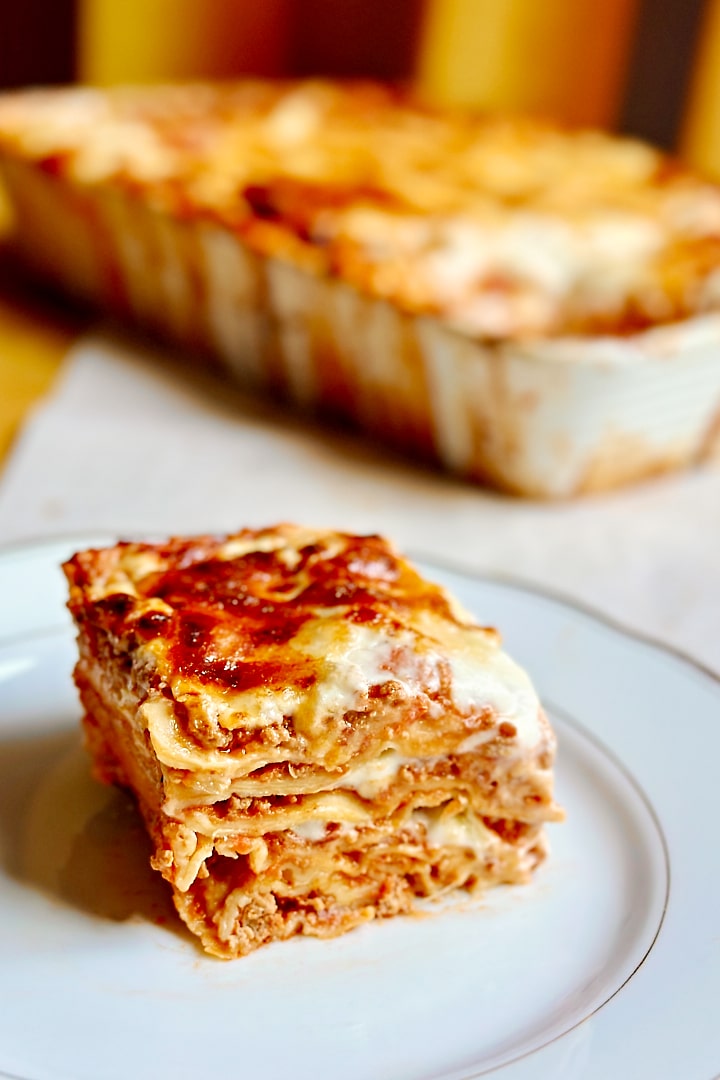
Ingredients and Tools You’ll Need
Step-by-Step Instructions
Step 1
Make the ragù alla Bolognese:
Finely dice the onion, celery, and carrots. Warm one tablespoon of olive oil and one tablespoon of butter in a large pot over medium heat. Sauté the vegetables over medium heat for 10 – 15 minutes, until soft and fragrant. This releases their flavors and natural sweetness. Remove the vegetables from the pan and set them aside on a plate.
Add another tablespoon of butter to the pan and increase the heat. Fry the pancetta and minced meat until browned on all sides, for about 10 – 15 minutes. Then, add the vegetables back to the pan. Mix well and continue to cook for a couple of minutes. Deglaze the pan with white wine. Using a wooden spoon, scrape up all the browned bits from the bottom of the pan and mix them into the sauce. Add the tomato passata and canned tomatoes. Rinse the can of the tomatoes with a cup of water and add it to the sauce. Season well with salt and pepper. Tip: You want the sauce to be slightly on the salty side. This helps to compensate for the lack of salt in the fresh pasta sheets and ensures a well-rounded flavor in the final dish. Cover the pan with a lid and simmer on low heat for 3 – 4 hours, stirring every now and then.
Towards the end of the cooking time, gradually stir the milk into the sauce. Bring it back to a light simmer and continue simmering without a lid for 10 – 15 minutes. The final ragù should be moist, creamy, and rich. Taste and adjust the seasoning, if necessary.
Step 2
Make the fresh pasta sheets:
Make one batch of fresh pasta dough: Pile the flour onto your work surface and create a well in the center. Crack the eggs into the center. Using a fork, break up the yolks and start to scramble the eggs. Mix the flour and eggs in the center. Gradually incorporate more and more flour until a thick paste forms in the middle. Then, fold in the remaining flour and bring everything together into a shaggy dough. Knead the dough for around 10 minutes, until smooth and firm. Cover it with plastic wrap and let it rest on the counter for at least 30 minutes.
Cut off a quarter of the dough and keep the rest well wrapped. Using a pasta machine, roll the dough out into thin pasta sheets. For this recipe, I rolled the dough out to setting 7 on my Marcato Atlas pasta machine. Cut the sheets into smaller rectangles that fit the size of your baking dish. I like to use 2 lasagna sheets per layer. Dust the lasagna sheets with semolina flour on both sides and store them on a floured baking tray, until ready to use. Repeat with the remaining dough.
Step 3
Make the béchamel sauce:
Melt the butter in a saucepan over medium heat. Whisk in the flour and cook it for about 2 – 3 minutes but make sure it doesn’t brown. Take the pot off the heat and gradually pour in the warm milk, while constantly stirring to prevent clumps. (Cold milk from the fridge also works, but it will take longer to thicken the sauce and bring it to a simmer). Keep stirring until you have incorporated all of the milk. Season with salt, pepper, and a pinch of nutmeg. Bring the sauce to a simmer over medium heat. Then cover the pan, turn the heat down to low and simmer for about 10 – 15 minutes, until the sauce has thickened. It should be smooth, velvety and just thick enough to cover the back of a spoon.
Step 4
Assemble the lasagna:
Once you have all of the ingredients ready to go, it’s time to assemble the lasagna. Spread a thin layer of meat sauce over the bottom of the baking dish. This will prevent the pasta sheets from sticking to the bottom of the pan. Then, add the first layer of pasta. Evenly spread another layer of ragù over it, followed by a layer of béchamel sauce and a sprinkle of grated parmesan cheese. Add the next layer of pasta, then meat sauce, white sauce and parmesan. Continue layering the ingredients in this order. Finish off with a thick layer of béchamel sauce and top it with the fresh mozzarella and grated parmesan.
Step 5
Bake:
Pre-heat the oven to 200° C. Cover the baking dish with aluminum foil and bake the lasagna covered for the first 20 minutes. This creates a moist and humid environment and ensures that the liquids in the sauce cook the pasta sheets. After 20 minutes, remove the foil and continue baking for another 20 minutes, or until the top is crispy and golden brown. You can turn on the broiler during the last few minutes for extra browning, but be careful to not burn the top.
Remove the baking dish from the oven and let the lasagna cool and rest for at least 20 minutes before slicing. This helps the layers to set and makes it easier to cut clean squares that won’t fall apart when you lift them out of the pan. Enjoy!
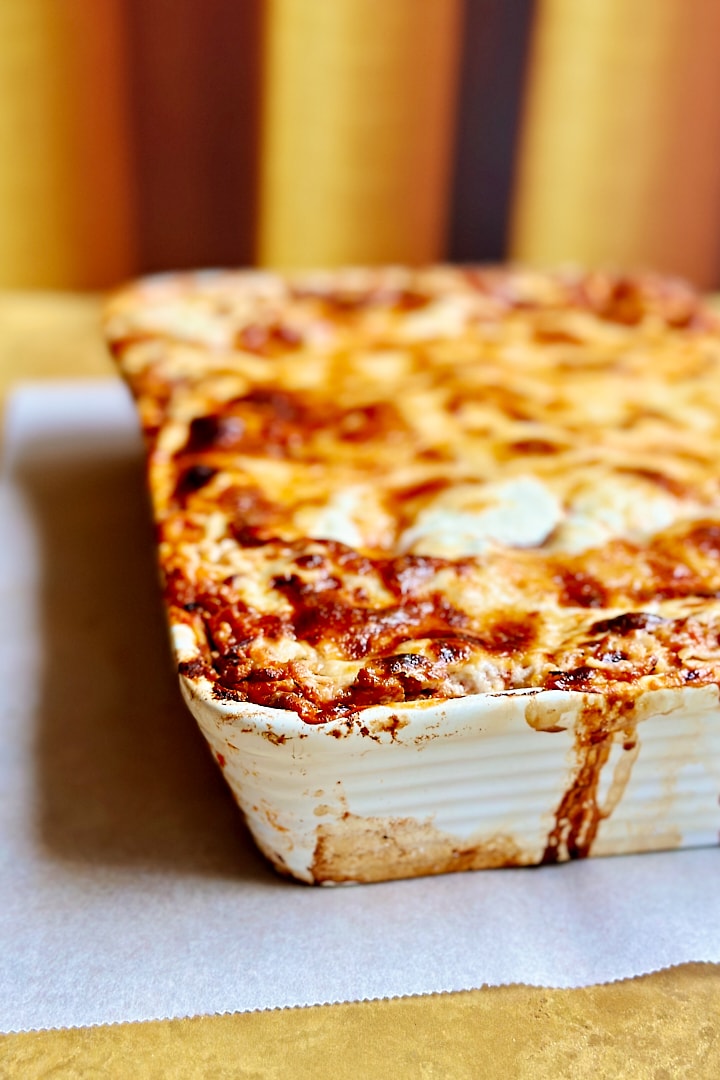
Tips & Tricks:
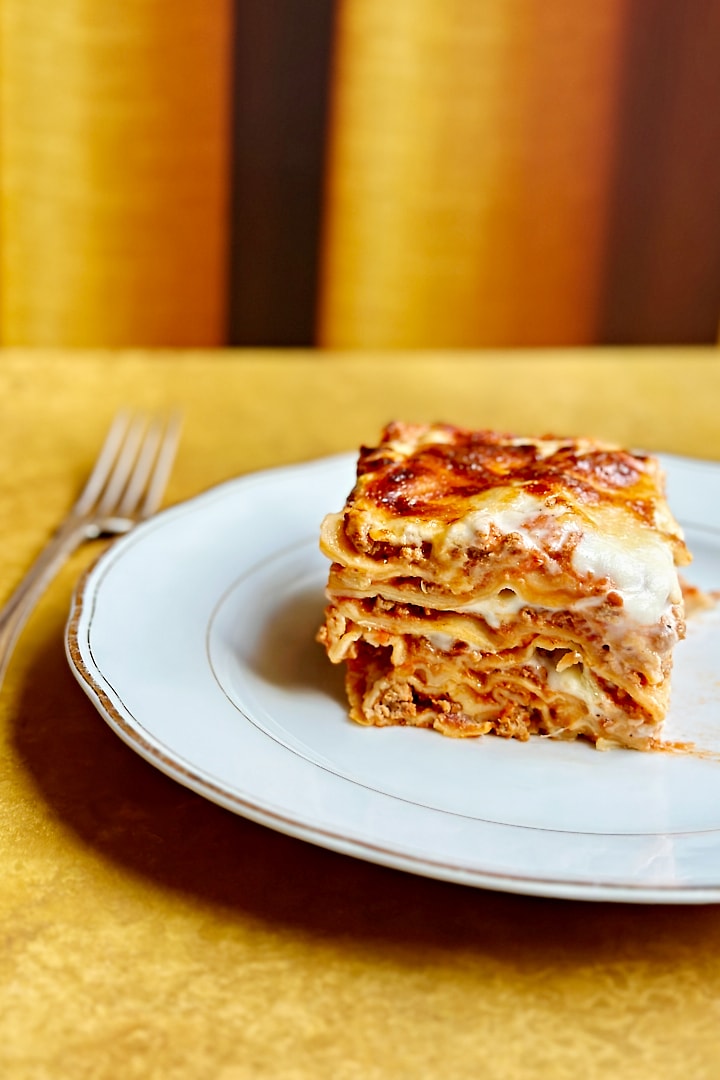
More Pasta Recipes You May Like:
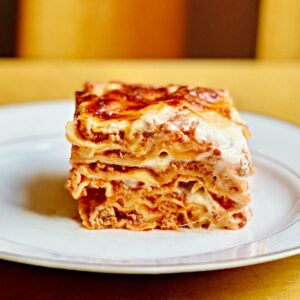
Easy Lasagna al Forno Recipe with Classic Bolognese Sauce
Equipment
- Baking dish – about 20 x 30 cm
Ingredients
For the ragù alla Bolognese:
- 1 tbsp olive oil
- 2 tbsp butter
- 1 yellow onion
- 2 celery stalks
- 3 carrots
- 120 g pancetta
- 500 g minced veal
- 500 g minced pork
- 250 ml dry white wine
- 250 ml water or broth
- 680 g tomato passata – one glass bottle of pureed and strained tomatoes
- 400 g canned tomatoes – diced
- 250 ml milk
- salt and pepper to taste
For the lasagne sheets:
- 400 g flour – Tipo 00
- 230 g eggs – about 4 medium eggs (weighed without the shells)
For the béchamel sauce:
- 80 g butter
- 80 g flour
- 1 l milk – warm
- salt, pepper and a pinch of nutmeg to taste
For the top layer:
- 200 g fresh mozzarella – ripped into small pieces
- 150 g parmesan cheese – finely grated; some of the cheese will be sprinkled between the lasagne layers.
Instructions
To make the ragù:
- Finely dice the onion, celery and carrots. Warm one tablespoon of olive oil and one tablespoon of butter in a large pot over medium heat. Sauté the vegetables over medium heat for 10 – 15 minutes, until soft and fragrant. This releases their flavors and natural sweetness. Remove the vegetables from the pan and set them aside on a plate.
- Add another tablespoon of butter to the pan and increase the heat. Fry the pancetta and minced meat until browned on all sides, for about 10 – 15 minutes. Then, add the vegetables back to the pan. Mix well and continue to cook for a couple of minutes. Deglaze the pan with white wine. Using a wooden spoon, scrape up all the browned bits from the bottom of the pan and mix them into the sauce.
- Add the tomato passata and canned tomatoes. Rinse the can of the tomatoes with a cup of water and add it to the sauce. Season well with salt and pepper. Tip: You want the sauce to be slightly on the salty side. This helps to compensate for the lack of salt in the fresh pasta sheets and ensures a well rounded flavor in the final dish. Cover the pan with a lid and simmer on low heat for 3 – 4 hours, stirring every now and then.
- Towards the end of the cooking time, gradually stir the milk into the sauce. Bring it back to a light simmer and continue simmering without a lid for 10 – 15 minutes. The final ragù should be moist, creamy and rich. Taste and adjust the seasoning, if necessary.
To make the fresh lasagne sheets:
- Make one batch of fresh pasta dough: Pile the flour onto your work surface and create a well in the center. Crack the eggs into the center. Using a fork, break up the yolks and start to scramble the eggs. Mix the flour and eggs in the center. Gradually incorporate more and more flour until a thick paste forms in the middle. Then, fold in the remaining flour and bring everything together into a shaggy dough. Knead the dough for around 10 minutes, until smooth and firm. Cover it with plastic wrap and let it rest on the counter for at least 30 minutes.
- Cut off a quarter of the dough and keep the rest well wrapped. Using a pasta machine, roll the dough out into thin pasta sheets. For this recipe, I rolled the dough out to setting 7 on my Marcato Atlas pasta machine. Cut the sheets into smaller rectangles that fit the size of your baking dish. I like to use 2 lasagne sheets per layer. Dust the lasagne sheets with semolina flour on both sides and store them on a floured baking tray, until ready to use. Repeat with the remaining dough.
To make the béchamel sauce:
- Melt the butter in a saucepan over medium heat. Whisk in the flour and cook it for about 2 – 3 minutes but make sure it doesn’t brown.
- Take the pot off the heat and gradually pour in the warm milk, while constantly stirring to prevent clumps. ( Cold milk from the fridge also works, but it will take longer to thicken the sauce and bring it to a simmer). Keep stirring until you have incorporated all of the milk.
- Season with salt, pepper and a pinch of nutmeg. Bring the sauce to a simmer over medium heat. Then cover the pan, turn the heat down to low and simmer for about 10 – 15 minutes, until the sauce has thickened. It should be smooth, velvety and just thick enough to cover the back of a spoon.
To assemble the lasagna:
- Once you have all of the ingredients ready to go, it’s time to assemble the lasagne. Spread a thin layer of meat sauce over the bottom of the baking dish. This will prevent the pasta sheets from sticking to the bottom of the pan.
- Then, add the first layer of pasta. Evenly spread another layer of ragù over it, followed by a layer of béchamel sauce and a sprinkle of grated parmesan cheese.
- Add the next layer of pasta, then meat sauce, white sauce and parmesan. Continue layering the ingredients in this order.
- Finish off with a thick layer of béchamel sauce and top it with fresh mozzarella and grated parmesan.
Bake the lasagna:
- Pre-heat the oven to 200° C. Cover the baking dish with aluminum foil and bake the lasagne covered for the first 20 minutes. This creates a moist and humid environment and ensures that the liquids in the sauce cook the pasta sheets. After 20 minutes, remove the foil and continue baking for another 20 minutes or until the top is crispy and golden brown. You can turn on the broiler during the last few minutes for extra browning, but be careful to not burn the top.
- Remove the baking dish from the oven and let the lasagne cool and rest for at least 20 minutes before slicing. This helps the layers to set and makes it easier to cut clean squares that won’t fall apart when you lift them out of the pan. Enjoy!
Video
@notjustfood_blog Making lasagna from scratch ???????????? #lasagna #pasta #recipe ♬ Cupid – Twin Ver. (FIFTY FIFTY) – Sped Up Version – sped up 8282
Notes
- If you don’t have enough time to make everything in one go, you can split up the process over the course of two days. You can make the ragù one day ahead and make the pasta sheets and the béchamel sauce the next day. You could also assemble the lasagne, cover it with foil and store it in the fridge overnight. Then, bake it the next day.
- It is not necessary to pre-cook or blanch fresh lasagne sheets before assembling the lasagna. However, if you don’t pre-cook the sheets, it is very important that your ragù contains enough liquids to cook the pasta. You also want to make sure to cover the baking dish with foil for the first 20 minutes of baking. This ensures that the liquids don’t evaporate too quickly and the pasta gets cooked through.
Nutrition
Do you have any questions about this recipe?
Let me know in the comments!
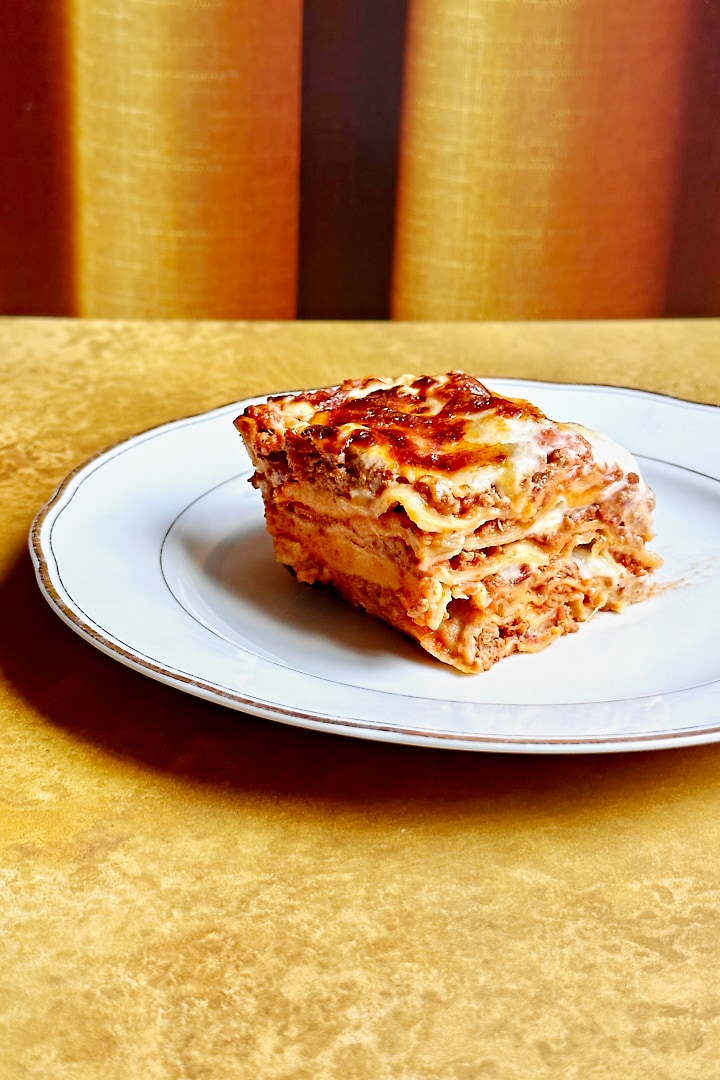

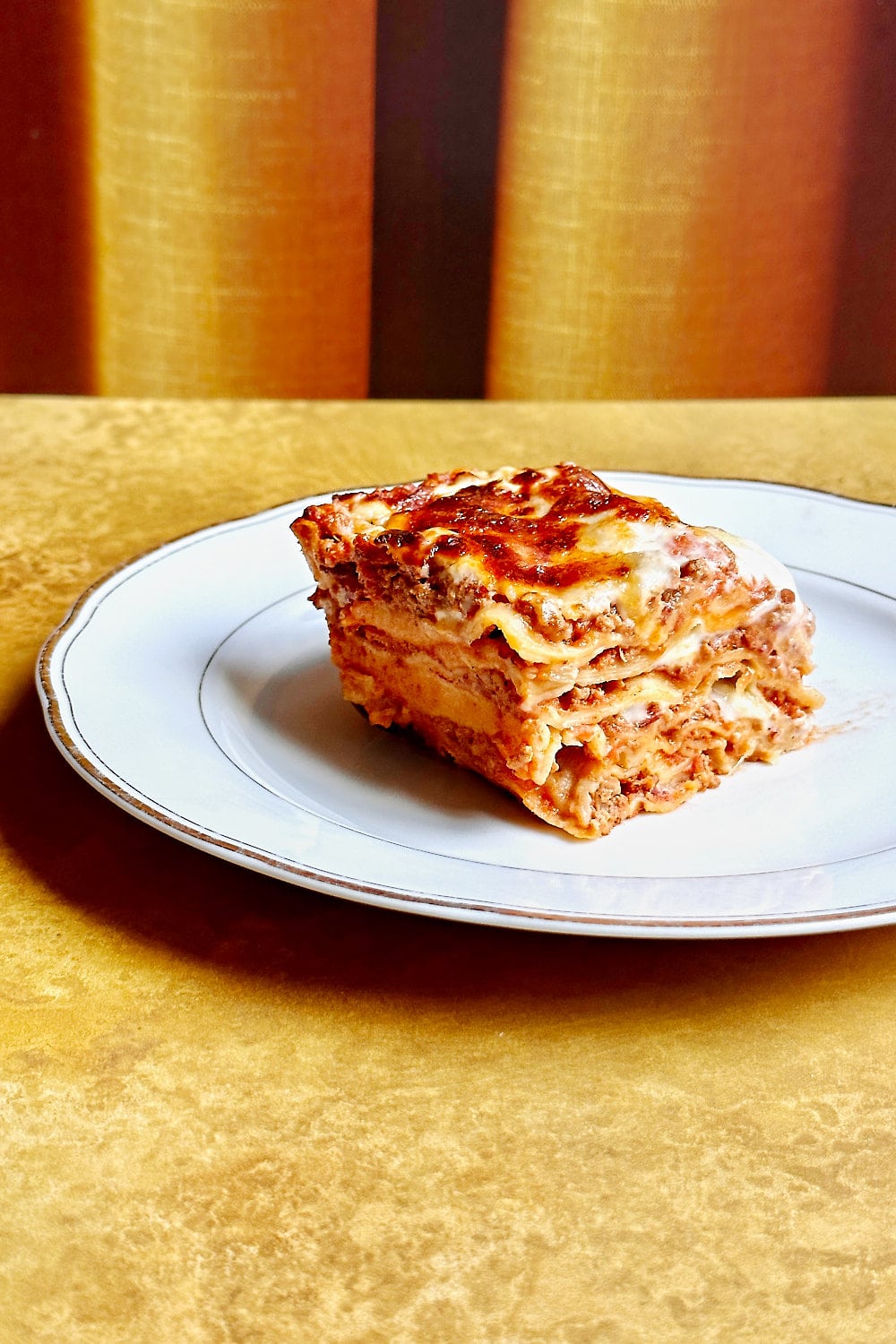
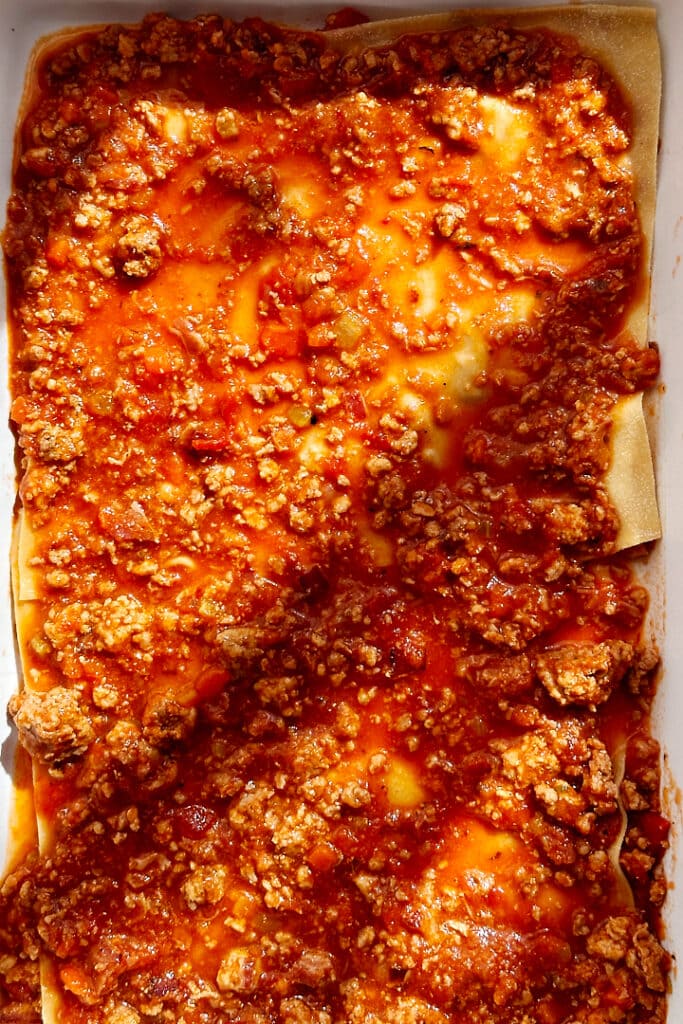


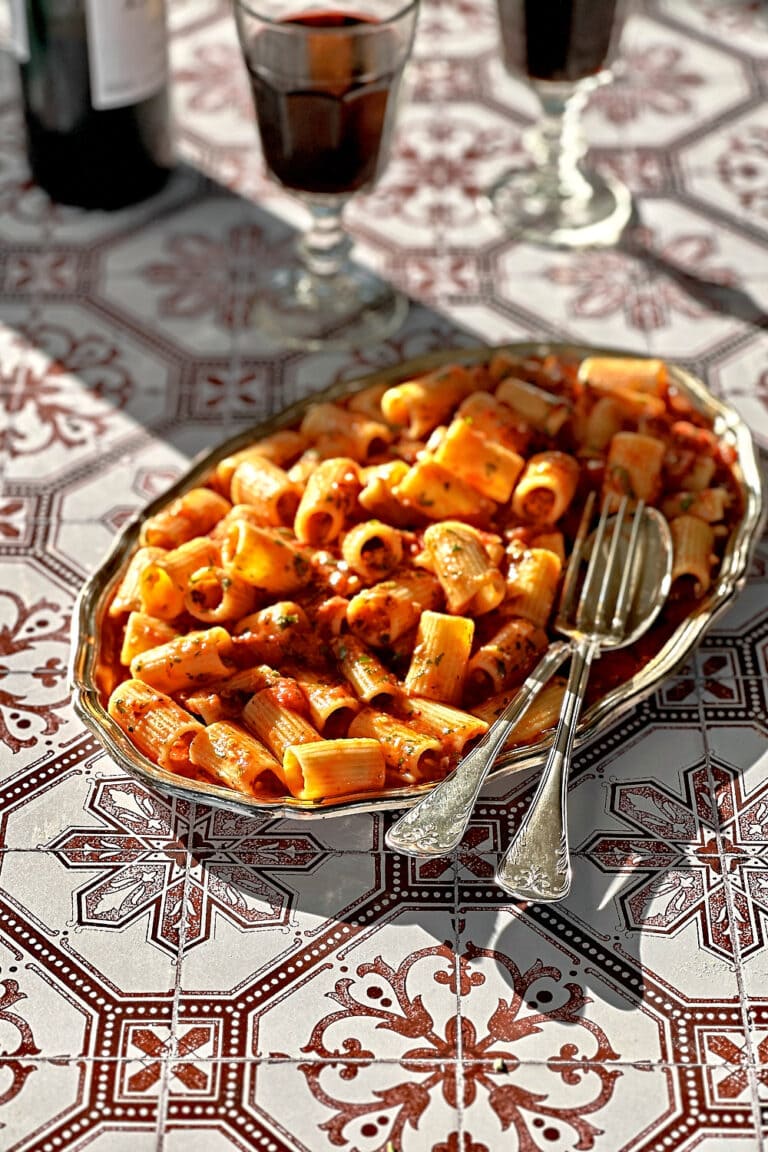
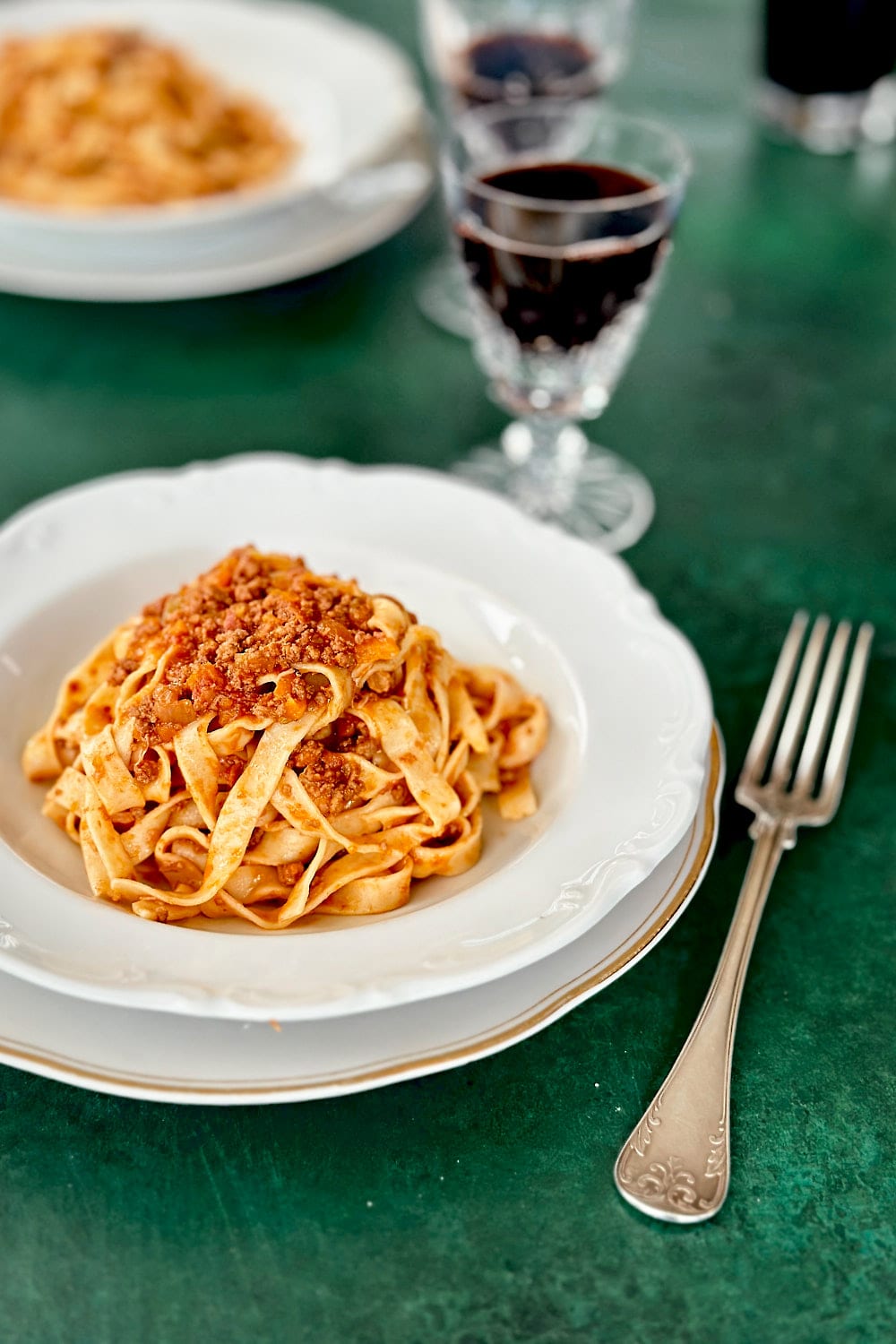
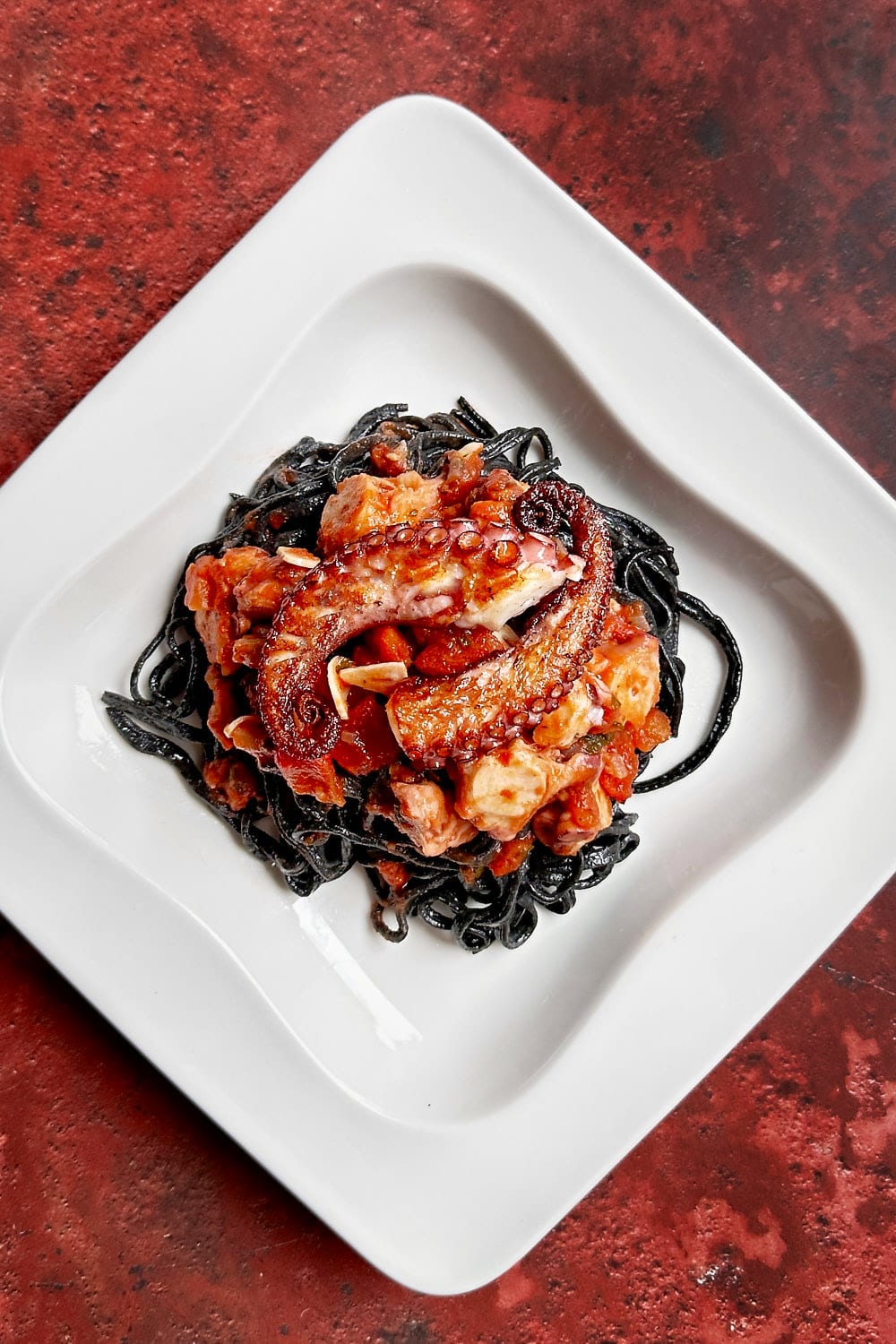
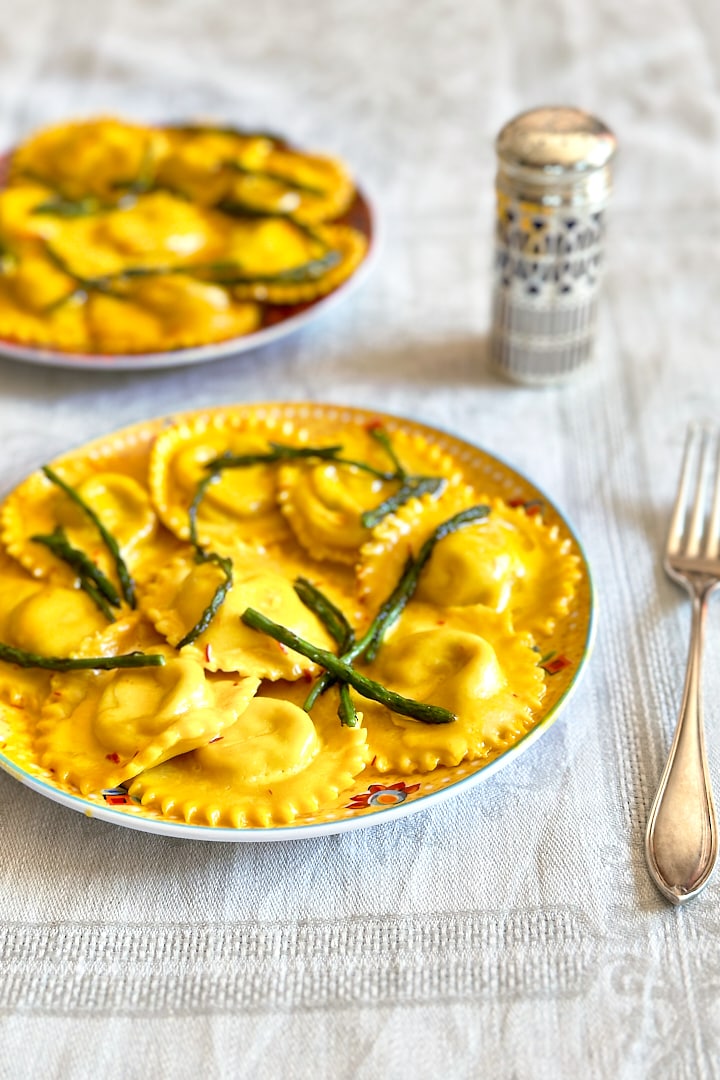
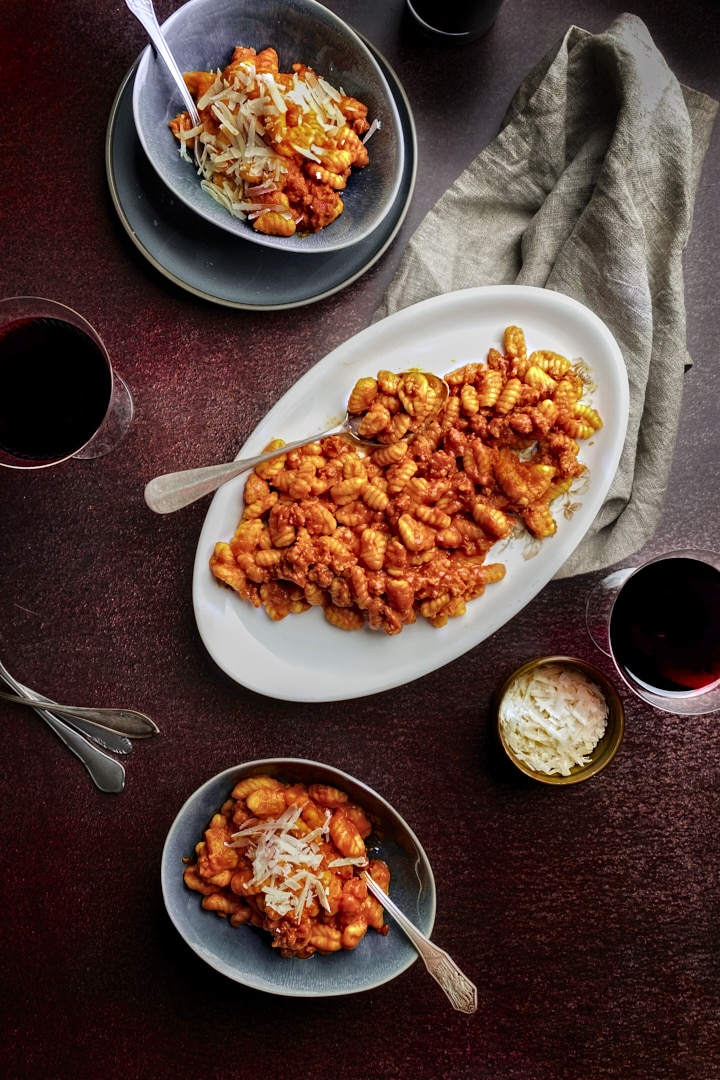
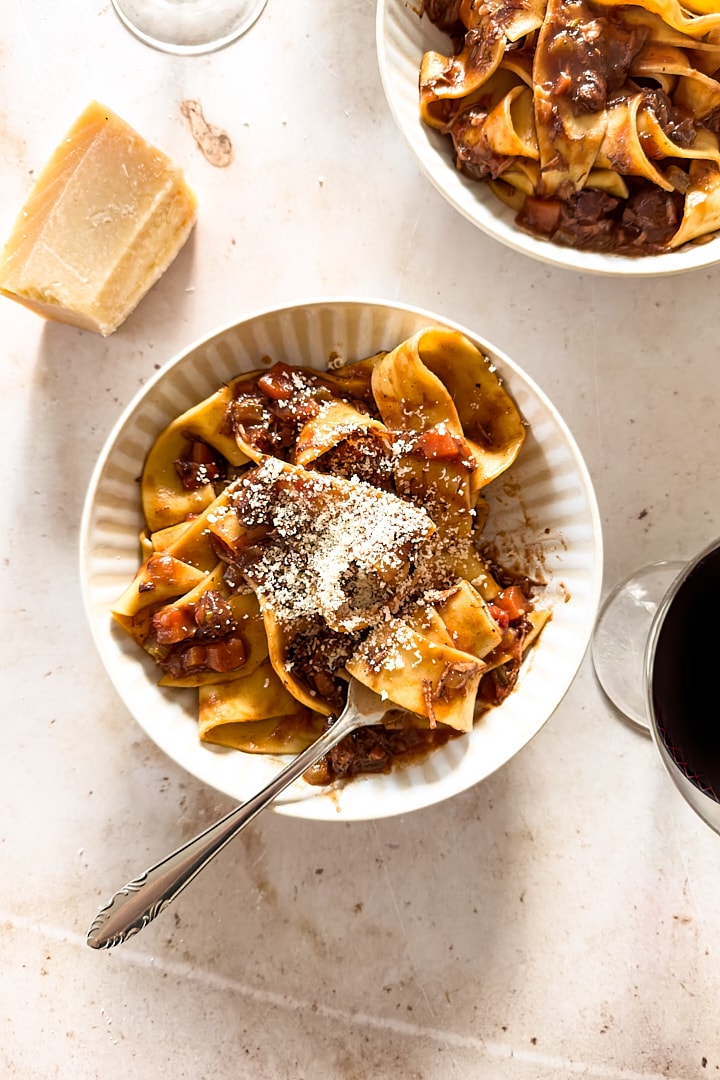
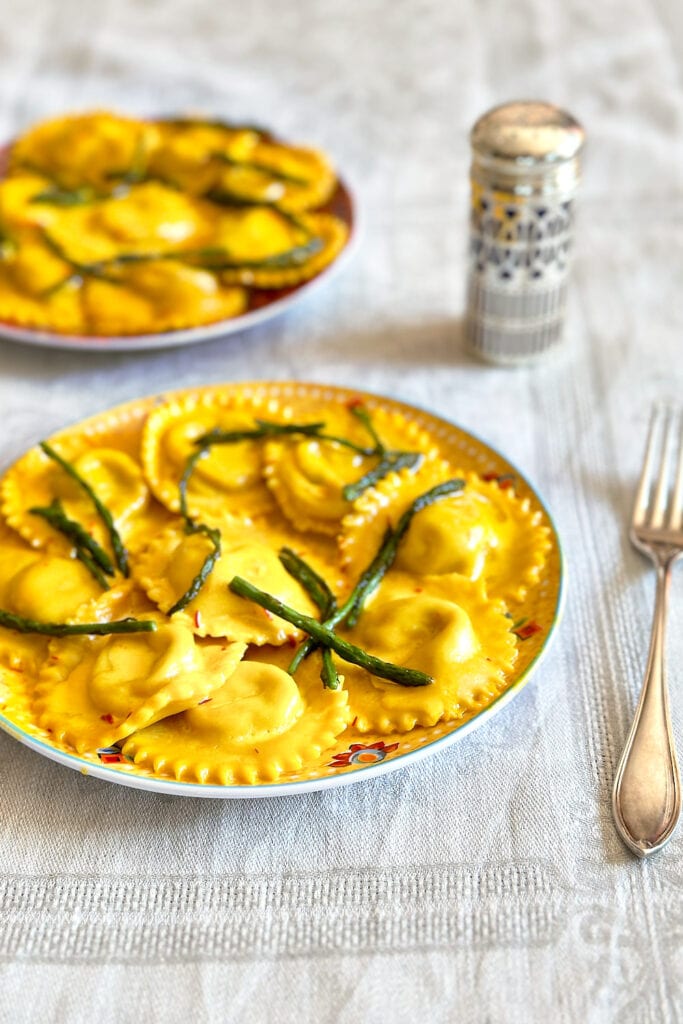
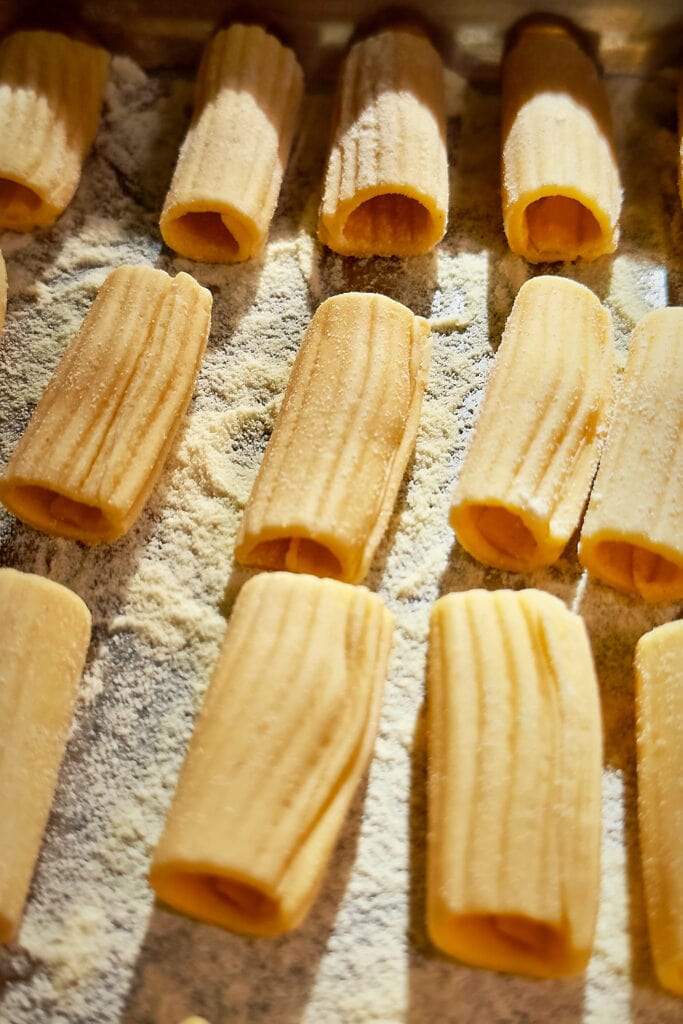
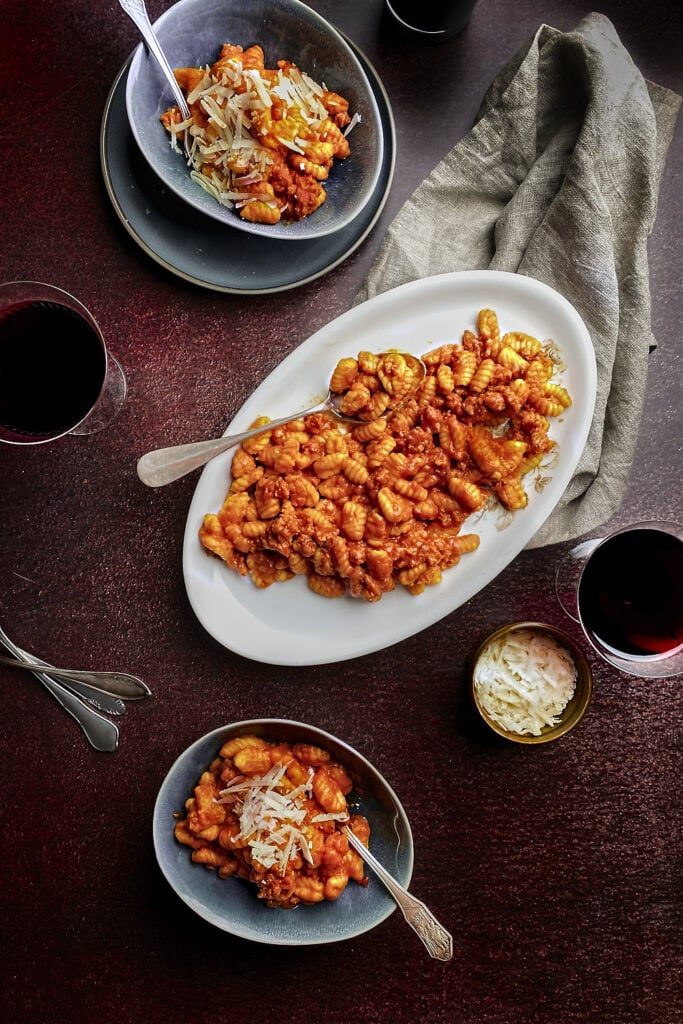
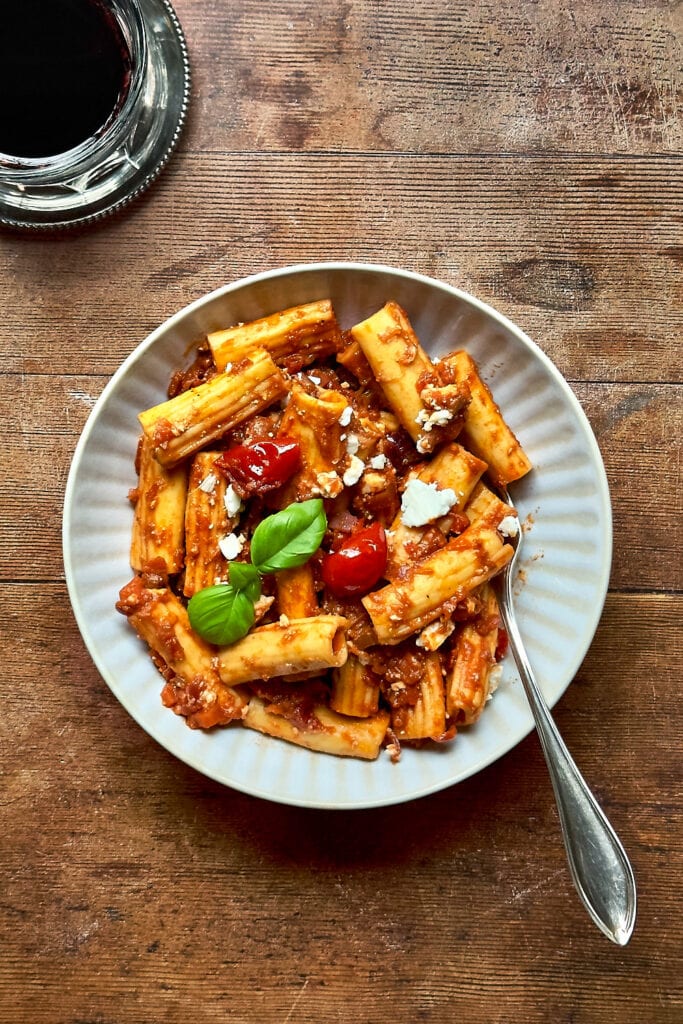
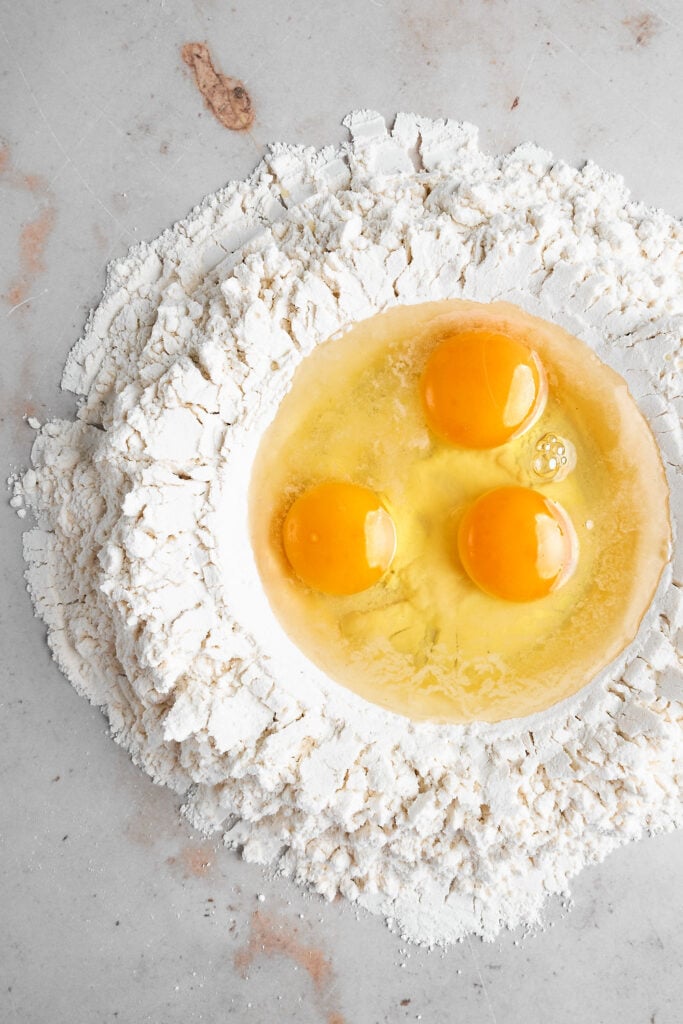
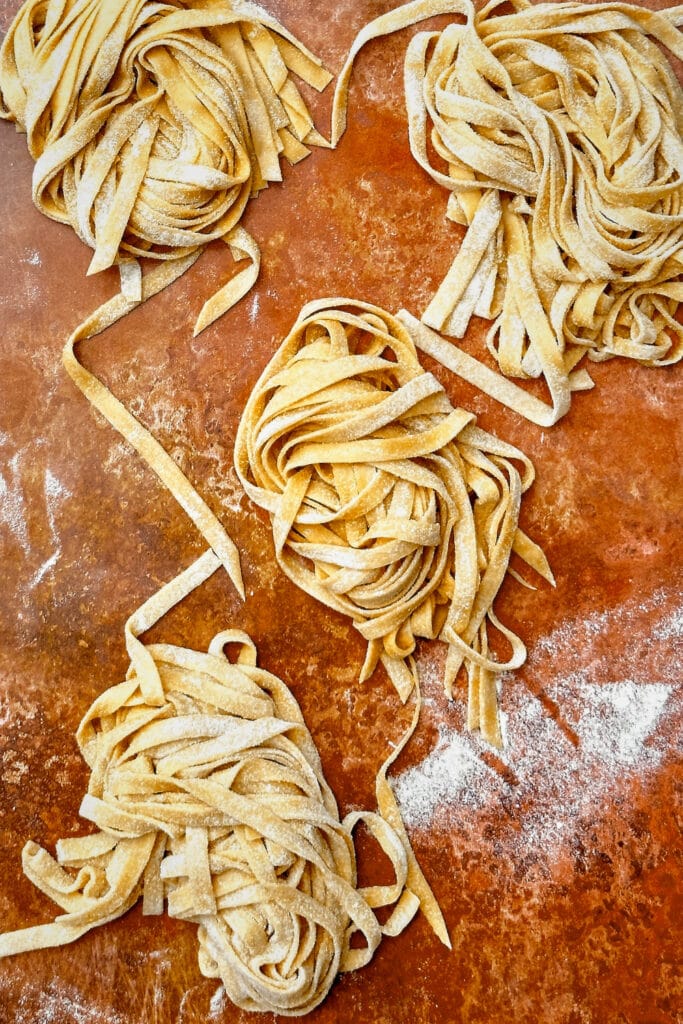
Hi there. Wouldn’t an ethical alternative to veal be better?
Sorry, I didn’t mean to spam, I thought my 1st comment hadn’t gone through..
I’m trying this today (minus the the veal!), it sounds yum.. I’m especially curious to try the pasta. I don’t have a pasta machine though… So I plan to roll it between sheets of greaseproof paper instead. Unless you’d suggest otherwise?
Ty
Hi Brendan! You can substitute the veal with beef or pork. Even ground turkey would work, even though the final taste might be slightly different. You basically just need 1 kg of minced meat of your choice. Regarding the pasta, there’s no need to use greaseproof paper to roll it out. Just make sure to flour your work surface and rolling pin. I recommend to work with small pieces of dough at a time and to roll it out as thin as possible. If at any point you feel that the dough resists and springs back during rolling, cover it with plastic wrap and let it rest for a few minutes. During the rest the gluten can relax and the dough will be easier to handle afterwards! Let me know how it goes!